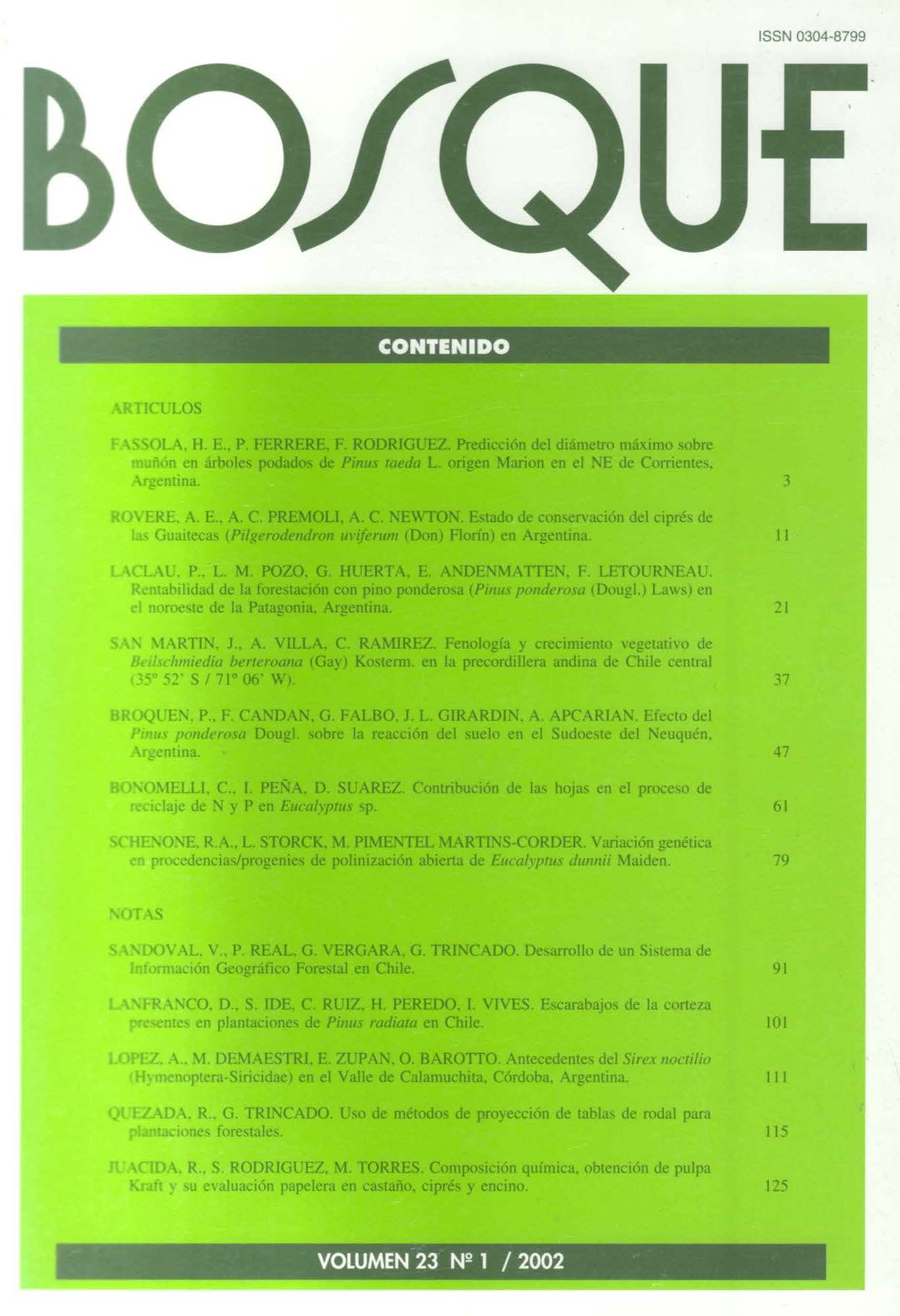Pinus ponderosa Dougl. effect in soil reaction in southwestern Neuquén, Argentina
Main Article Content
Abstract
Soil reaction and some properties related with Al activity were studied in 26 plots distributed through an approximately west-east transverse: 13 with native vegetation, Nothofagus forest and 13 with Pinus ponderosa Dougl. -the first plantation from 14 to 56 years- under equivalent site conditions. Soil was sampled in each plot at three different points, and a composite sample of three simple samples per centimeter in the first five was obtained. The pH (KCl) values were near five, indicating a relative dominance of Al in the soil solution. They were lower than pH (H2O), probably indicating the presence of a variable electronegative charge. Within the five first soil centimeters, all properties, except pH (H2O), were significantly different. The marked decrease of pH (KCl) under pines, to values lower than five, indicated an increase of exchangeable acidity and Al. Total exchangeable cations were lower under pines, suggesting that Al occupied exchangeable sites. The absence of changes in soil solution acidity and the increase of exchangeable acidity are related to the high soil buffering capacity of volcanic soils enhanced by Al activity, and the permanent addition of volcanic ashes. The significant increase of pH (NaF) under pines would indicate a trend to allophane formation, which in turn would contribute to increases in the buffering capacity of the soils.

